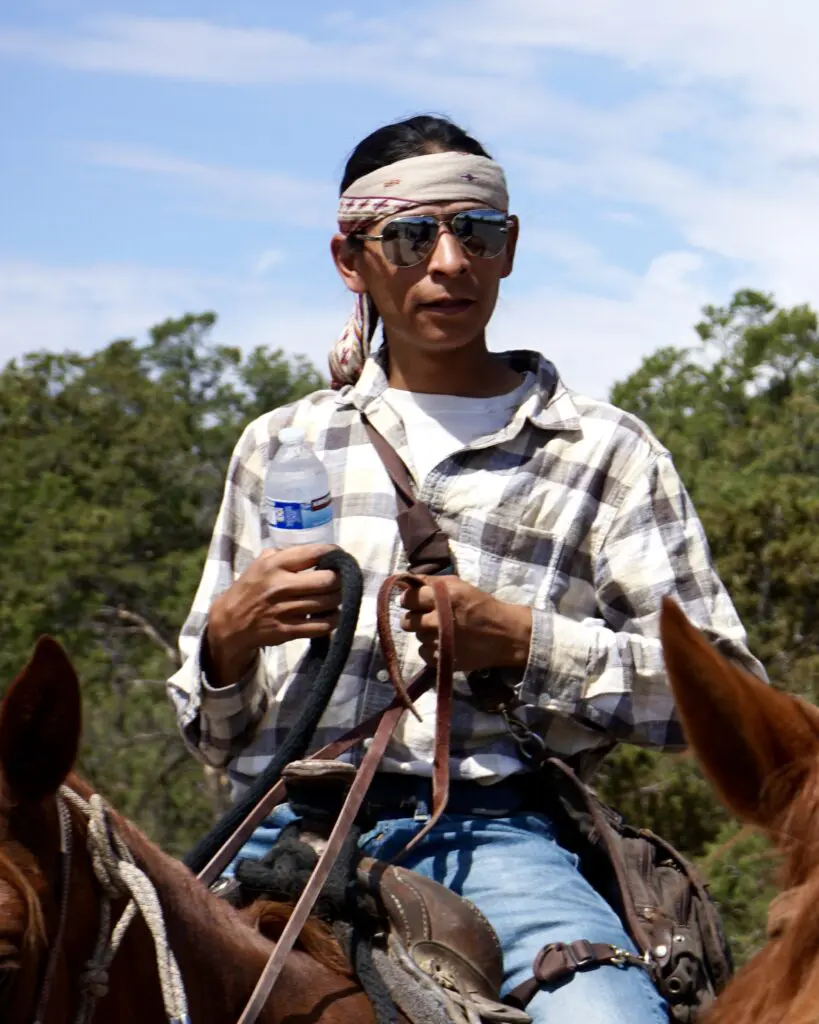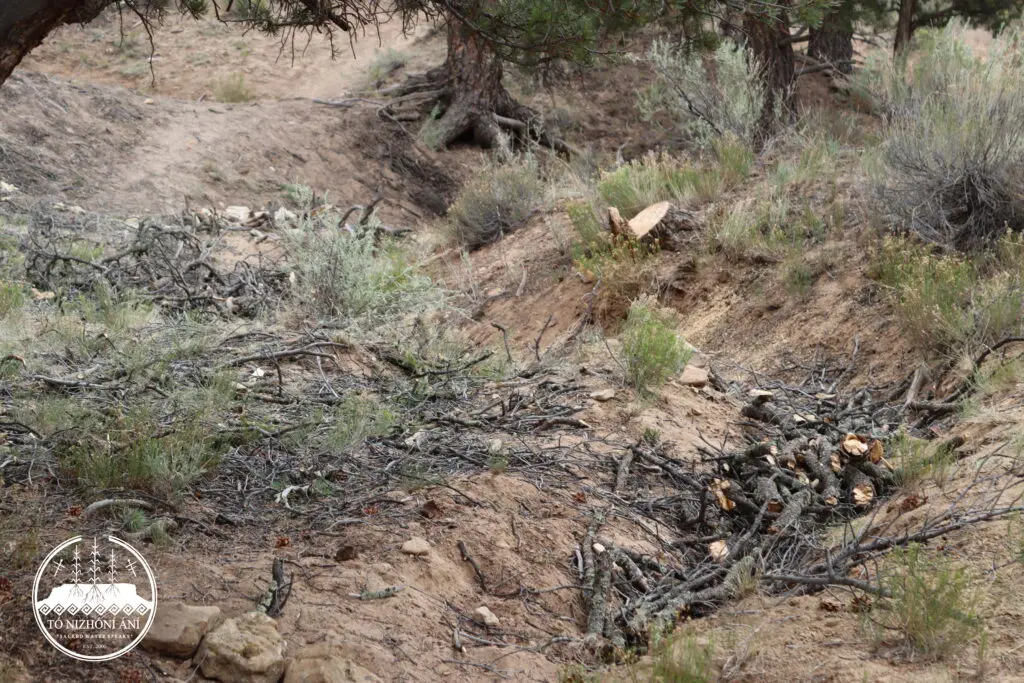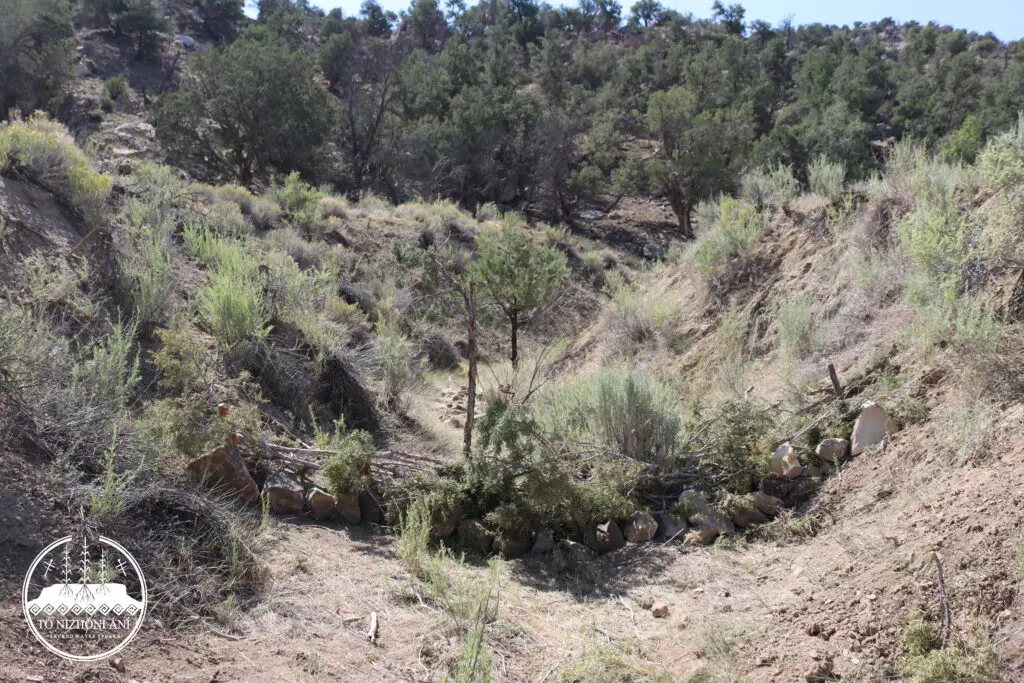TNA July Watershed Work 2025
The 2025 Watershed Restoration season with Tó Nizhóní Ání has been continuing its work!
Great things and grand results do not happen over time. They are built over many hard days and countless hours, with discipline and passion, for the result of something remarkable. The results of our labor may not show themselves in the next week or year, but still, we prevail towards the restoration of a landscape that holds significant meaning now and into the future.
For the month of July, Watershed Restoration crew worked a total of 4 sessions:
June 30th to July 3rd: Stage/Gathering Building Materials
July 9th to July 11th: Installing Monitoring Equipment & Model Structure
July 15th to July 16th: Building Structures
July 22nd to July 25th: Continuing Building Structures
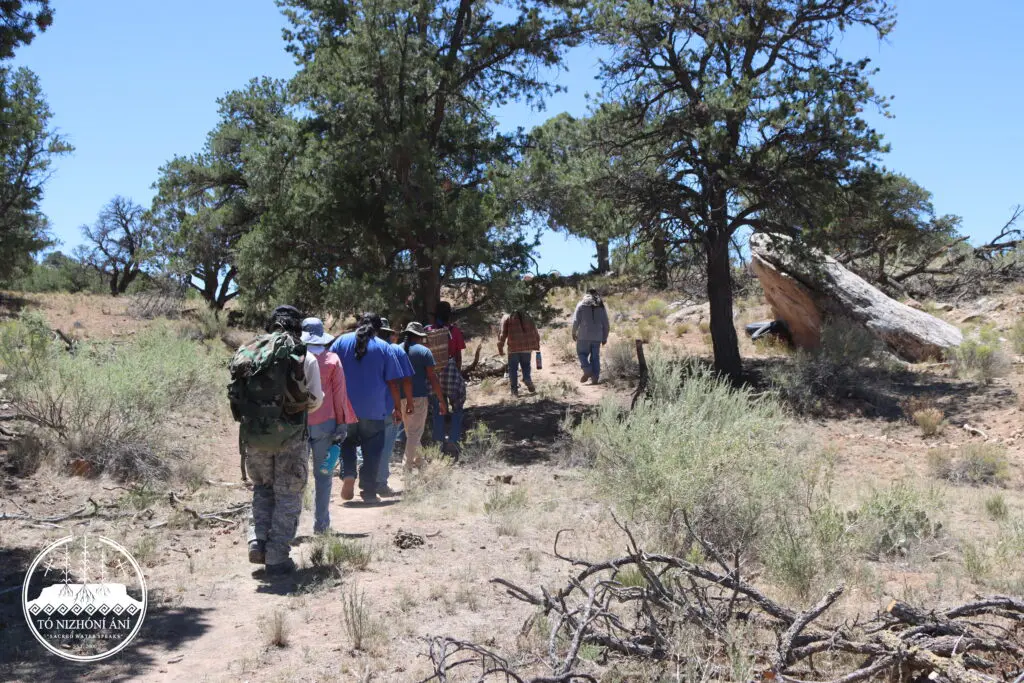
The Tsé Adááłdááz Watershed Restoration Campaign at TNA has become a testament to our ability to listen to the land, read its complexities and respond to its needs. This watershed, while significantly smaller than the Tsiyi’ Tó Wash Pilot Project, presents unique challenges and brings discussions about what we are to do to bring about the best result. Should we meander the stream or maintain its shape? Where should we build the aggradation structures to build back sediment? Are the structures we made before going to be appropriate here? How much rock do we need and where are we going to source it?
It was clear that we needed to have a lot of building materials. Our work in smaller streams translates and scales up into larger drainages that capture water from the overall watershed, totaling about 320 acres. Presents are meanders with sloped banks, supported by rabbitbrush, sage, and the occasional Pinon Pine. The goal in these streams is to push a straight stream to bend left and right to bring sinuosity. The slower we can make the water let the moisture soak in, the better. It’s also important to note that construction happens quicker when the building material is very close to the build site, thus making the location of rock piles and logs very important. With the lack of mechanical assistance besides a tractor, we are left with people power to load any loose rock and wood debris under the hot sun.
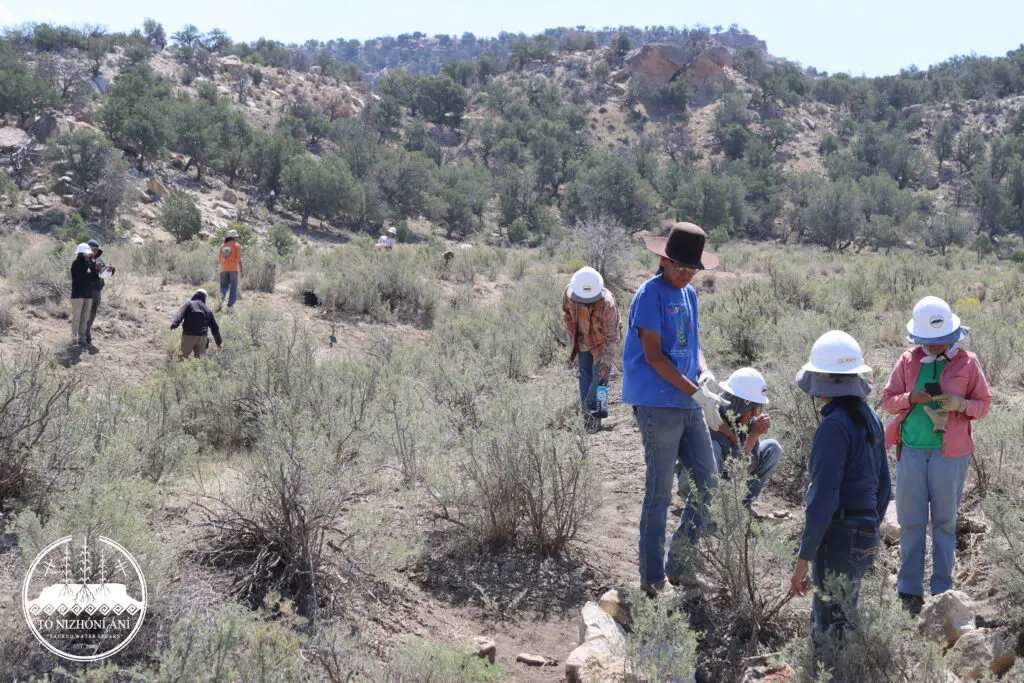

Collecting building material had to be done strategically to prevent additional ecosystem loss to road construction and potential tampering with cultural sites. Gathering sites are surveyed for any signs of previous inhabitance and are avoided if artifacts are present. Rocks were gathered from adjacent hillsides, taking materials only on the surface and rolled downhill for collection at the bottom. Whole work sessions focus on staging and collecting rocks due to the distance between the build sites and the rock sites, which increases as the valley widens up to 2,000 feet. Sourcing local material is the preferred practice but must be conducted with care.
All the hard work materializes into the formation of vanes, weirs and baffles in rock detention structures and erosion control structures. Our pilot project prepared the group to create simple structures like one rock dams and media Lunas, but with larger washes we expanded our knowledge base to confidently assemble boulder baffles and log vanes. Determining where the bank’s full flood height in the watershed is difficult due to sluffing and high vegetation growth, but it’s obvious that these washes have the potential to collect several hundred gallons of surface runoff. We continue building for those 100-year floods, and this is evident in the size of rocks placed within the wash. The most impressive structure installed in this project is the Navajo (Zuni) Bowl connected to a rock rundown where a powerline service road once existed. An evident head cut threatening the entire north end of the valley can eventually split the valley into several fragmented “islands”.
The largest cause for concern in the valley was stopped with an appropriately angled bank sloping with rocks to slow the velocity of water before it plunges and gathers into a pool at the bottom. One other large bowl exists, which will impound water for days after precipitation has fallen. A rain gauge and a few soil stakes were placed for monitoring purposes within the watershed. Soil aggradation is measured by the inch; precipitation totals are measured by the hundredth of an inch to give empirical data to reflect the effect of the rock structures on the landscape. A game camera will be installed soon to monitor wildlife activity that may take advantage of newly made pools of water from work.
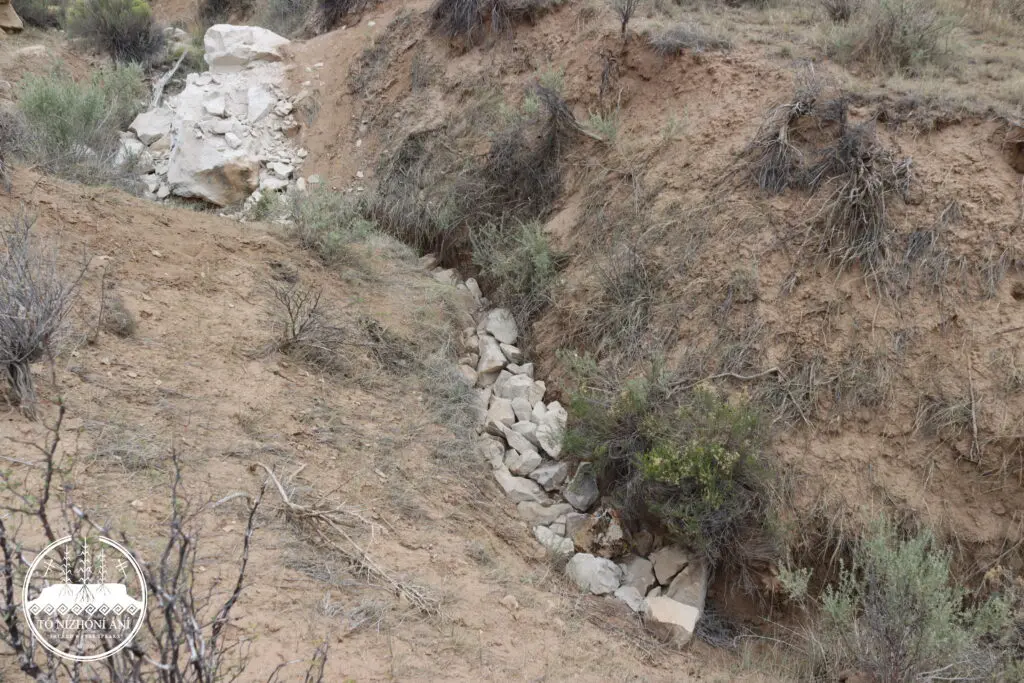
This work is needed for a landscape that is quickly eroding with each passing storm. Currently, the project is in the monitoring phase as we wrap up the 2025 building season. If any changes affect the structures, our team will gather to fix or modify. We look forward to seeing progress as the monsoon season rolls around.
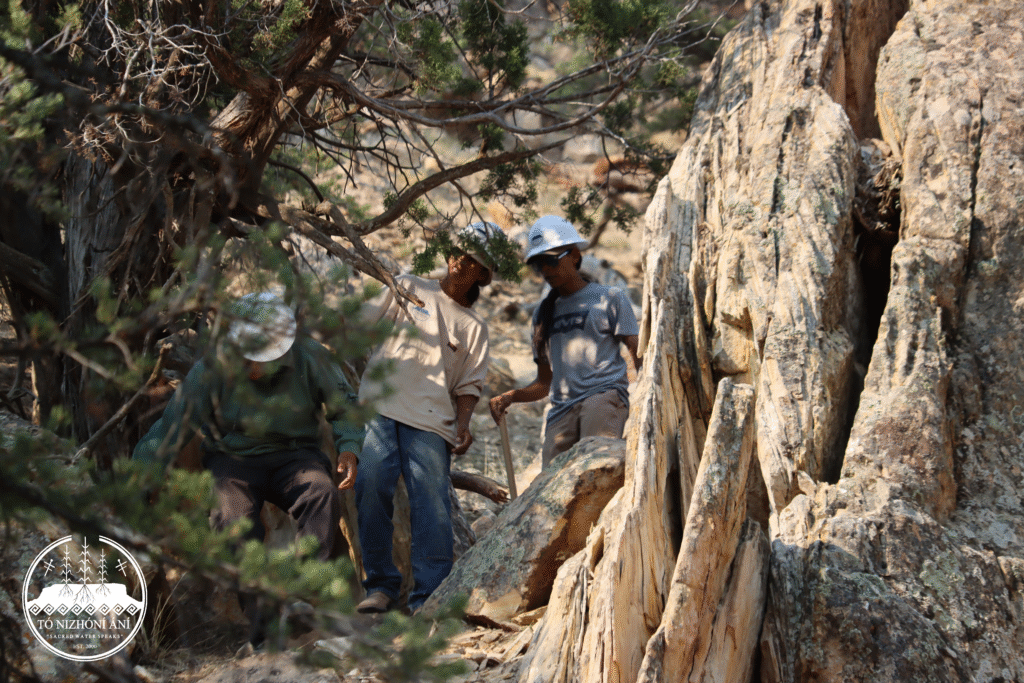
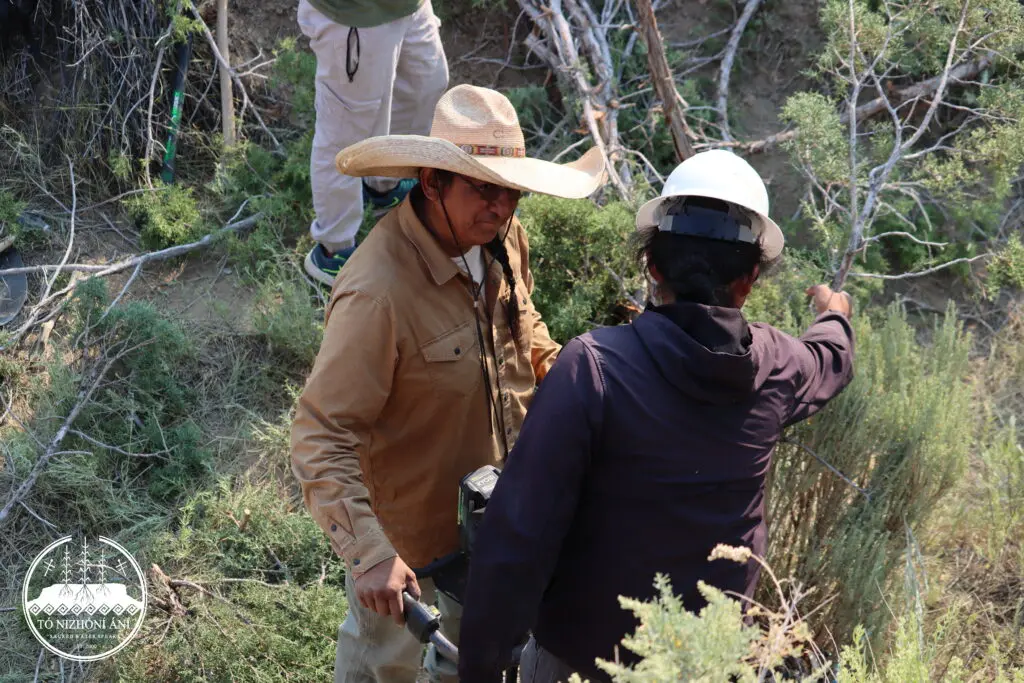
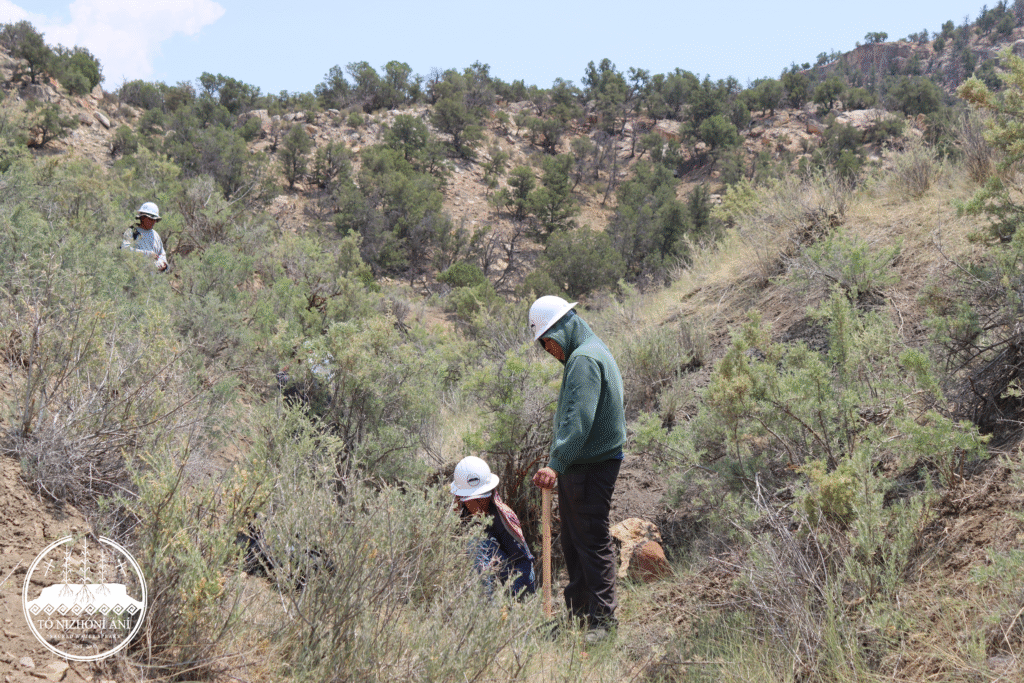
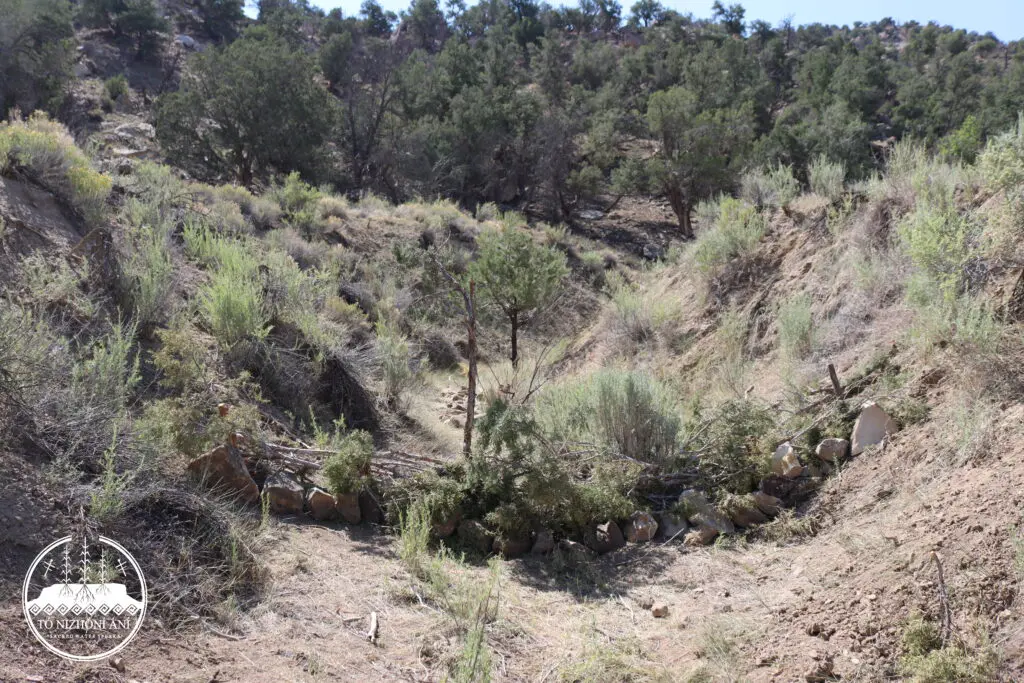
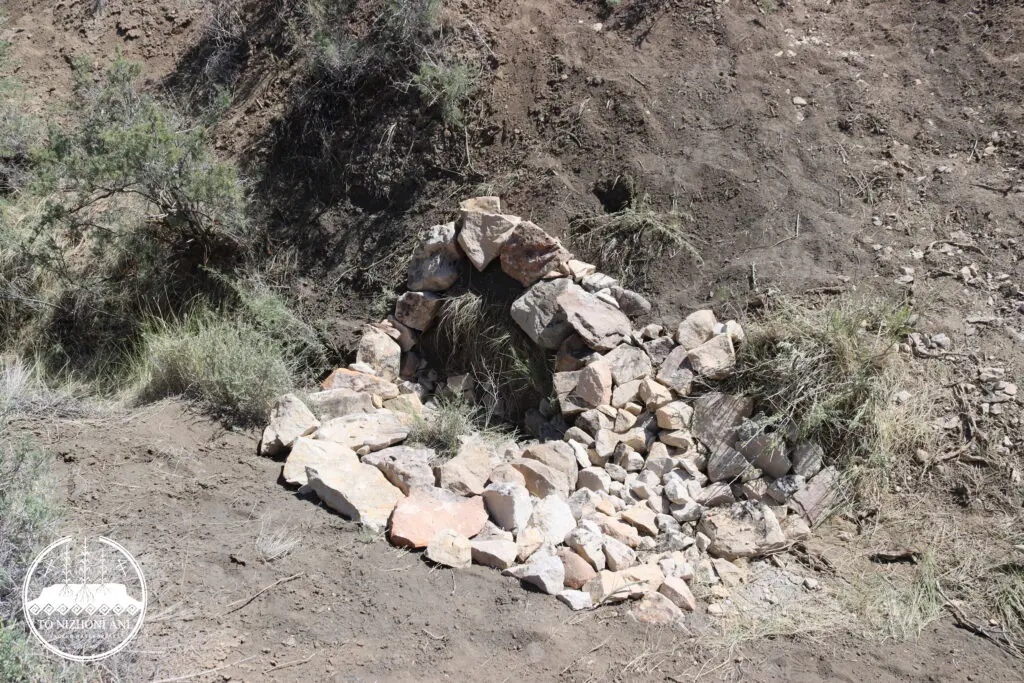
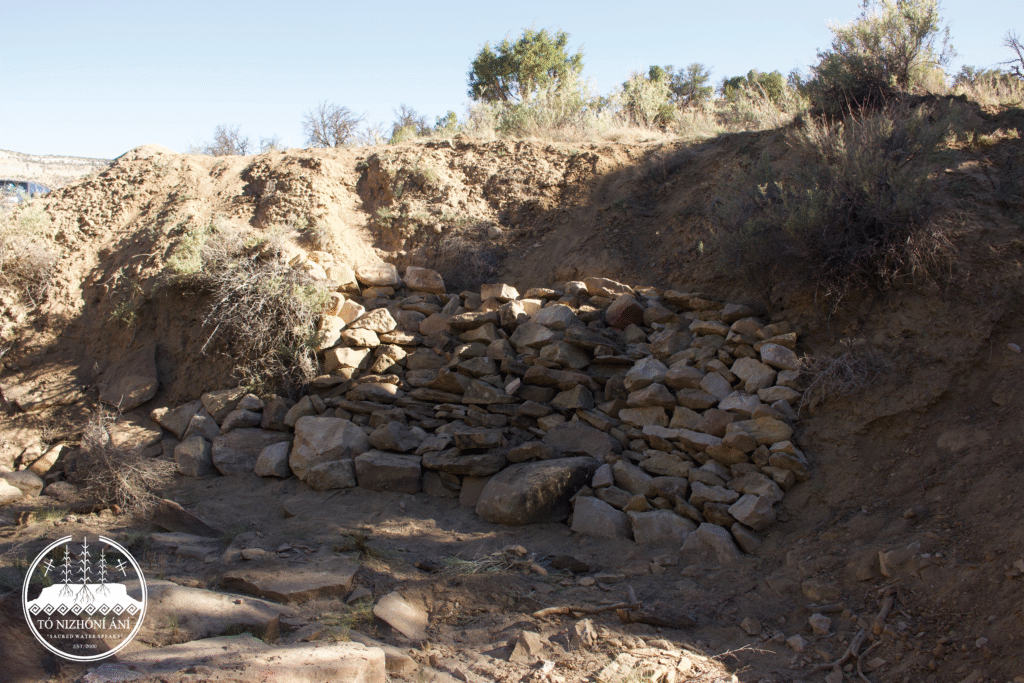
Remembering Ian Simonson
2001 – 2025
Áshįįhí + Chíshí Dine’é + Honágháahni + Ana’ adaałtsózí
Ian was a very kind and much-loved member of our watershed restoration program. He had a great passion for the outdoors, the land he lived on, the animals he took care of and the water he sought to protect. He was smart and loved working with his hands. He wanted to make a positive impact on the land, but also to those around him. We mourn the loss of Ian and we’ll miss his upbeat attitude, contagious smile and devotion.
